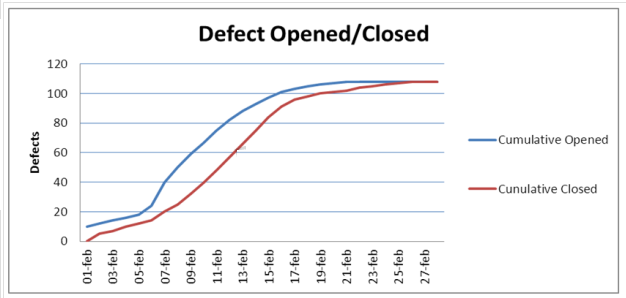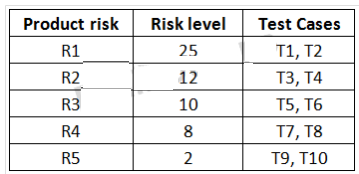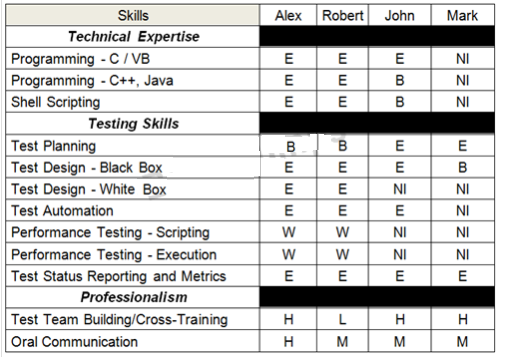Question: 1
The following chart plots the cumulative number of defects opened against the cumulative number of defects closed during system testing of a software product.

Which of the following statements is true? K2 1 credit
Question: 2
Which of the following statements about the TMMi test process improvement model is true? K2 1 credit
Question: 3
Assume that you are the Test Manager for a small insurance application development project. You have decided to adopt a risk-based testing strategy: 5 product risks (R1, R2, R3, R4, R5)
have been identified and their levels of risk have been assessed. 10 test cases (T1, ..., T10) have been designed to cover all the product risks.
The following table shows the risk level and the test cases associated to the identified product risks (higher risk level means higher risk):
You are not confident with the assessment of the risk level and you suspect that it will be possible to find high-priority bugs in low-risk areas.

Furthermore the period for test execution is very short. Your goal is to test all the product risks in a risk-based way, while assuring that each product risk gets at least some amount of testing. Which of the following answers describes the best test execution schedule in this scenario? K3 2 credits
Answer : B
Show Answer
Hide Answer
Question: 4
Which of the following statements describing how identified product quality risks should be mitigated and managed, is true?
K2 1 credit
Question: 5
Consider the following skills assessment spreadsheet for your test team (consisting of four team members):
This spreadsheet has three sections: technical expertise, testing skills and professionalism.
The skill levels for each skill area for both the ''technical expertise'' and ''testing skills'' sections have been rated on a four-point scale:
- E (Expert): indicates that a person has expert knowledge and experience in the skill area
- B (Beginner): indicates that a person has some knowledge and experience in the skill area but he/she is not autonomous
- W (Wants to learn): indicates that a person has no knowledge or experience in the skill area but he/she wants to learn that skill
- NI (Not Interested): indicates that a person has no knowledge or experience in the skill area and he/she is not interested to learn that skill
The skill levels for each skill area of the ''professionalism'' section have been rated on a three point scale (H=High, M=Medium, L=Low).
You are using this skills assessment spreadsheet in order to define a training development plan for your test team.
Your objective is to fill the skill gaps by having at least a team member rated as an expert for each skill identified for the ''technical expertise'' and ''testing skills'' sections, and with the ability to train the other team members.
Considering the budget constraints you can send only one person to a training course.

Based only on the given information, which of the following answers would you expect to be the best option to achieve your objective?
K4 3 credits